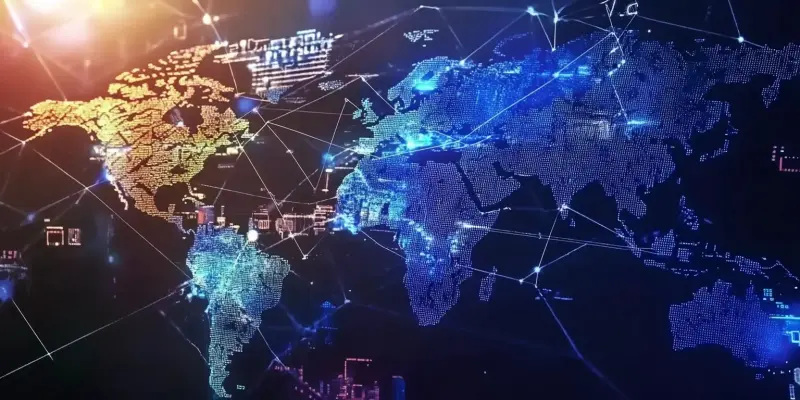In the evolving landscape of global finance, the recent developments within the BRICS nations highlight a significant shift towards an independent cross-border payment system. This initiative is not merely a reaction to Western financial controls but also an embrace of innovative technologies that could redefine international transactions. Russian Finance Minister Anton Siluanov’s recent comments underline the BRICS nations’ focus on financial sovereignty and digital integration. A tweet by crypto influencer Amelie further stirred discussions by suggesting that XRP, known for its speed and efficiency, might be incorporated into this nascent system, presenting profound implications for global finance.
BRICS’s Financial Independence Initiative
The drive for financial independence within the BRICS nations stems largely from geopolitical tensions and economic sanctions imposed by Western countries. Notably, the exclusion of Russian banks from the SWIFT network has expedited the pursuit of alternative financial infrastructures. Siluanov has confirmed that Moscow is actively working on creating financial instruments that integrate national currencies, digital technologies, and digital financial assets. These measures aim to fortify the economic resilience of BRICS members, ensuring their financial transactions remain unhindered by external pressures.
This proposed system’s potential to leverage XRP comes from past tests undertaken by BRICS countries, which demonstrated the cryptocurrency’s efficiency in cross-border transactions. Amelie’s statement on XRP is grounded in its proven speed and cost-effectiveness, which align with BRICS’s goal of a swift, reliable, and cost-efficient payment system. Despite the absence of official confirmation from BRICS leaders, the adoption of XRP could symbolize a broader trend towards decentralized financial solutions in international finance.
Role of Digital Financial Assets and Blockchain Technology
The integration of digital financial assets and blockchain technology within this new system reflects a broader international trend towards decentralization. Blockchain technology offers unparalleled transparency and security, qualities essential for a robust cross-border payment system. Digital currencies can seamlessly bypass traditional banking intermediaries, reducing transaction times and costs significantly. This shift towards decentralized finance is evident in the initiatives undertaken by individual BRICS nations and their collective endeavors.
Moreover, blockchain’s immutable ledger provides an additional layer of security, making it difficult for any single entity to manipulate financial records. For BRICS countries, adopting such technologies could mean a greater degree of financial autonomy and reduced dependency on Western-dominated systems. The endorsement of digital assets also signals an alignment with global economic shifts where digital currencies are increasingly accepted in mainstream finance.
Implications for Global Financial Dynamics
The potential establishment of a BRICS cross-border payment system represents a strategic move that could redefine the current global financial dynamics. This system could provide an alternative to existing Western-controlled networks, aligning with the broader geopolitical goals of the BRICS nations. By minimizing reliance on platforms like SWIFT, BRICS can better safeguard their economic interests against external sanctions and political pressures.
If XRP or similar digital assets are integrated into this new system, it would not only validate cryptocurrencies’ role in mainstream finance but also potentially shift the balance of financial power. The move could encourage other nations to explore similar decentralized payment systems, fostering a more multipolar financial world. The implications for global finance are vast, affecting international trade, diplomatic relations, and the overall stability of global markets.
Innovations Shaping Financial Infrastructure
The financial restructuring within BRICS, highlighted by Russia’s economic strategies, underscores a commitment to innovation and resilience. Siluanov’s mention of Russia’s expected budget deficit decline points to the positive impact these financial innovations could have on national economies. By overhauling their financial infrastructure, BRICS members aim to foster economic growth and strengthen trade relationships, enhancing their collective economic clout.
The systemic changes proposed by BRICS could serve as a blueprint for other emerging economies grappling with similar economic pressures and global financial dependencies. These efforts reinforce the necessity for nations to innovate continually and adapt to the rapidly changing financial landscape. The success of such initiatives could eliminate longstanding financial bottlenecks, promoting more inclusive and efficient international trade practices.
Future Considerations and Strategic Shifts
In the ever-changing landscape of global finance, recent events within the BRICS nations mark a notable shift towards an independent cross-border payment system. This initiative aims not only to counter Western financial dominance but also to harness cutting-edge technologies that could revolutionize international transactions. Russian Finance Minister Anton Siluanov’s recent statements underscore the BRICS countries’ commitment to financial sovereignty and digital integration. Adding to the buzz, a tweet by crypto influencer Amelie suggested that XRP, celebrated for its speed and efficiency, might be incorporated into this emerging system. Such a move could have far-reaching implications for global finance, potentially reshaping the way cross-border payments are conducted. These developments highlight a pivotal moment, with BRICS nations not just reacting to existing financial controls but proactively creating a more autonomous and technologically advanced framework for international payments, reflecting a broader push for economic independence and innovation on the global stage.

